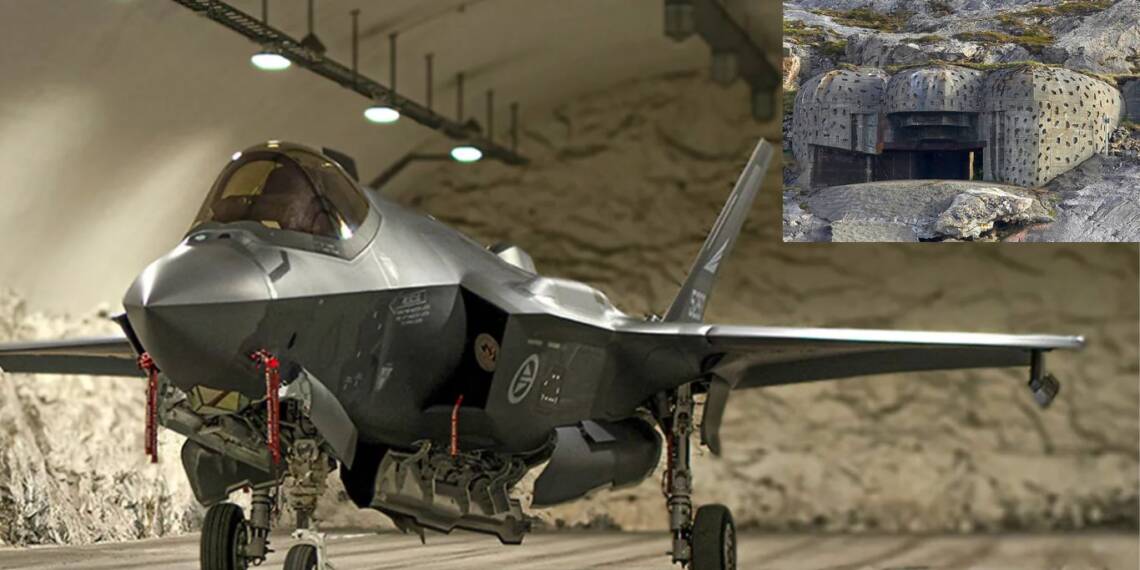As the geopolitical configuration changes rapidly in Europe, Norway is reviving two Cold War-era military bunkers. The Bardufoss Air Station and Olavsvern naval base, once key defence sites against Soviet possible attack, are being reactivated to strengthen military preparedness. The reason behind the reactivation of these bunkers and defences is Norway’s perceived threat of Russia.
Europeans have now started wondering that the US security umbrella will no longer be available them under the Trump administartion. Hence, they are preparing their own defences in panic. Tensions with Russia have forced Norway to create a strong defence to its border with Russia north of the Arctic Circle.
During the Cold War, Norway built around 3,000 underground military bunkers, many of which were decommissioned after the Cold War ended. Now, with Russia’s growing military activity in the Arctic and its invasion of Ukraine, Norway has to think about its security structures, which led to a revival of these fortified structures.
Bardufoss Air Station, located north of the Arctic Circle, kept fighter jets in mountain hangars envisaged to protect them from any possible Soviet bombardment. These hangars included everything the planes and their pilots needed, such as fuel storage, weapon storage, space for maintaining the aircraft systems, and crew areas. The air station was opened in 1938 and upgraded to improve the survivability of Norway’s F-35 jets, especially against drone threats. The world has seen how small and cheap drones can be used to destroy massive and expensive aircraft. Hence, reviving these bunkers could provide stealthiness to the grounded aircraft.
Olavsvern Naval Base, dug in the 1950s into a mountainside and shielded by 275 meters of granite, functioned as a NATO stronghold during the Cold War. Its underground dock and command centre made it an important location for observing Russian naval activity. In 2009, the Norwegian parliament narrowly voted to close down the top-secret Olavsvern base despite the growing threat from Russia. Following its decommissioning and controversial sale to private investors in 2013, WilNor Governmental Services repurchased the base in 2020. Since then, it has started to repair and upgrade the site, and there has been an increasing military presence at the base and the US Navy is interested in basing their nuclear submarines there as well.
Norway’s move reflects a broader security decision to fortify its borders and military capabilities in order to be prepared for any possible war in the region. Notably, militarization has gained momentum in Europe, especially in countries bordering Russia, which is being prepared by inducting new military weapons, Increasing military personnel and enhancing defence expenditure. Sweden has reopened its Muskö Island naval base, and Poland has announced an increase in army personnel from 200000 to 500000.
However, It is also important to note that many Cold War underground facilities in the United Kingdom and other NATO nations have been sold and converted into museums or nightclubs. Some were destroyed. At least one has been sealed up. Many more will have been flooded and rendered physically unusable, with the concrete rotting and no longer blast-resistant.
Due to NATO expansion, despite a clear warning from Putin, Russia has reactivated around 50 Cold War-era installations in the Arctic. Putin also announced a total of 160,000 men aged 18-30 have been called up for a year of military service. Russia aims to increase the size of its military to 2.39 million, with 1.5 million active servicemen. Threats from Russia and Europe are mounting on each other, and nations in the region are looking like they are preparing for the fight.








